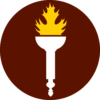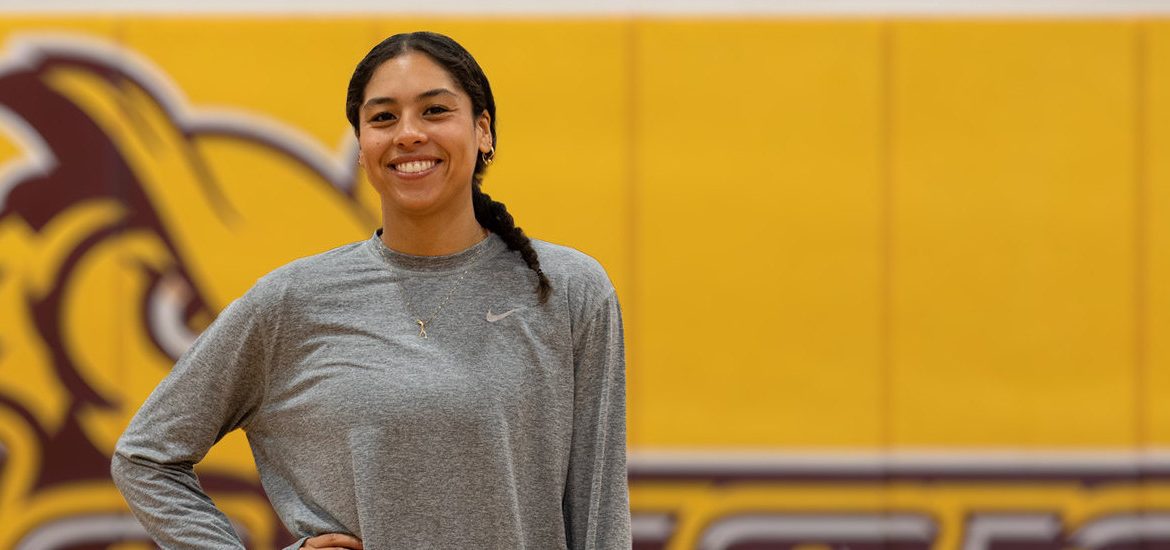In this edition of #PROFspective, we learn of the the viewpoint of senior Health and Physical
Education major Adrianna Blake of Bayonne, NJ (Hudson County). In our conversation with Adrianna, we discuss with her as to how her unique Rowan experience led the way for her discovering what her future in physical education means.
What goes into being a Health and Physical Education major here?
Being a Health and Physical Education major means a lot to a lot of different people. For myself, I went into the major more so thinking of the health aspect. I grew up to be a really intuitive eater. I’m one of the people that you’ll see in the grocery store looking at the back label making sure there’s no gums or corn fructose syrup. I want to implement more longevity, taking especial care as to what individuals are putting into their body and noticing the difference in their everyday life.
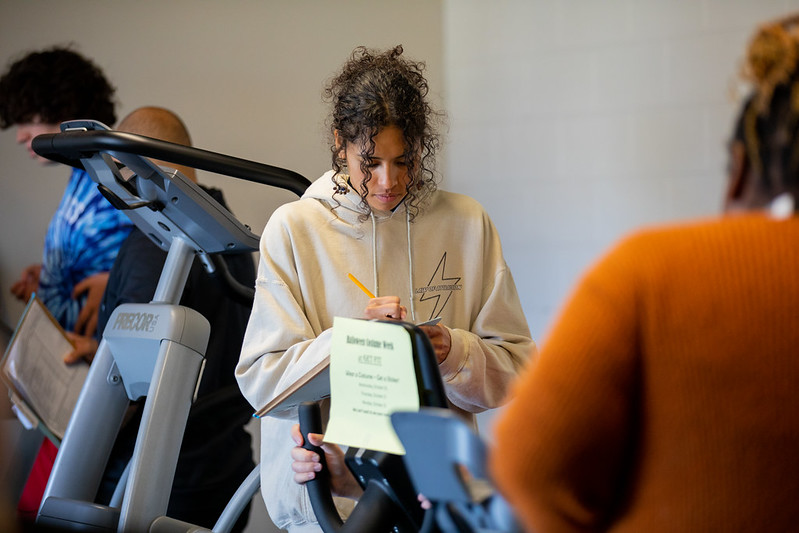
Health and physical education is essentially teaching students to build healthy and sustainable life habits. Whether that be through nutrition, your mental and physical health or as I stated earlier, creating healthy life habits, it’s our duty as future educators to remind these kids to make sure they implement all of these different lifestyle habits into their life.
How did you come into Rowan?
When I first came into Rowan I was actually a Law and Justice major. I was obsessed with “Criminal Minds” in high school and I had envisioned myself as this FBI/detective character. Eventually, I figured out what kind of work that entailed and that I would have to take it home with me. I figured it would be too much for me to handle. So, I looked into the education field.
I’ve been playing sports all my life and I figured health and physical education would be the right fit for me. It was a mix of trial and tribulation. I had originally gone in as early elementary from, from what I believe was Kindergarten to grade two or three. Elementary ed was from grade three to five and I remember realizing that I didn’t want to be put into this box where I’m stuck teaching only a specific age or grade level for the rest of my life. With physical education, which is K-12 certification, it gives me more leeway to test the waters and broaden my own perspective.
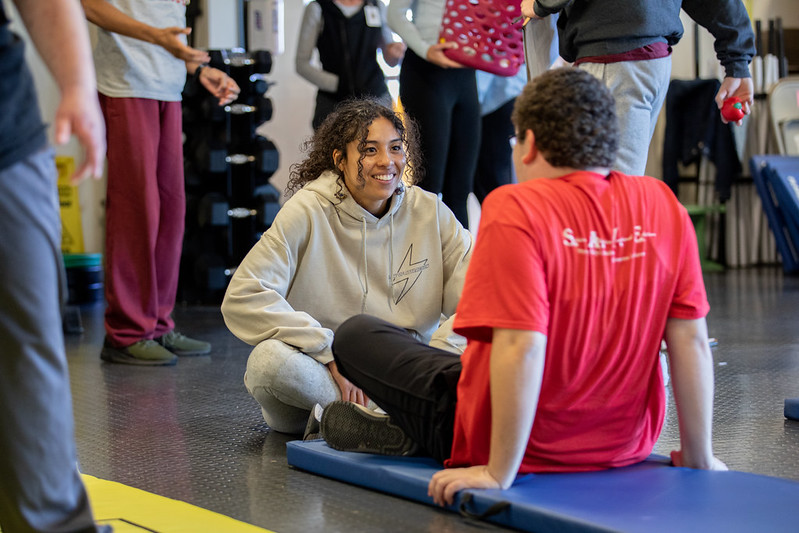
What is your coursework like being a physical education major?
I had actually just come back from Concepts of Creative Dance and HPE. I had taught a lesson where I was this tree going through all of the four seasons. It’s a lot of creativity and adding your own originality to the lessons that you’re teaching. In my opinion, it takes a lot of planning and formatting and can be a bit on the tedious side. But overall, I feel that the concepts that we want to get across can best be accomplished through the energy that you, as the educator, bring to the class. You can have a stellar lesson plan and meet all the criteria on paper, but if you show up to class and have low energy or just not familiarize yourself with the students, they’re not going to be as responsive to the material as they’ll just be reading it off like a piece of paper.
What is your involvement on campus like? Are there any specific clubs or organizations that you’re a part of?
So I’m part of the HP club and this semester I’ve been volunteering to do “Get Fit.” It’s an established program where people with disabilities come with whomever, such as their parents or guardians, and get assistance with weight training.
For many people with disabilities, they do not receive a well-rounded physical education. However, with “Get Fit” we create a safe environment. It’s easier to feel comfortable in a room where you’re able to relate and empathize with other people, especially more so when you have a support system and people that want to see you succeed. Our participants give us progress worksheets that we fill out every week so we can see their progress.
What sport(s) were you involved with when you were in high school? How did this inspire you to later become a physical education major?
Another reason I had thought physical education was a good choice for myself was because of my athletic background. In high school, I was a triathlete, I was involved with soccer, basketball and threw shot put and discus in track and field. On the latter, I had thought it was almost crazy that I was involved with throwing. I had started my sophomore year and I ended up being exceptional at it. For myself, I had really gotten so proficient in throwing through technique and not just the raw physical aspect of it. All of my background in sports had given me inspiration to go into the physical and health education major. I’ve had so many great figures in my life that eventually I want to be on the coaching side of things.
I had actually come into Rowan to play basketball my first year. Unfortunately, four days into my second year I had torn my ACL around four days before the season had started. Health and physical education really had played a part in changing my perspective as a whole. I understand why there is a stigma with the major and how it can be perceived as being solely focused on sports, but it is so much more than that. And obviously, physical activity helps with longevity and putting you in a better mood, enhancing all these great things. But you want to make sure that you’re also working on your mental health and being mindful of what you consume and put into your body as well.
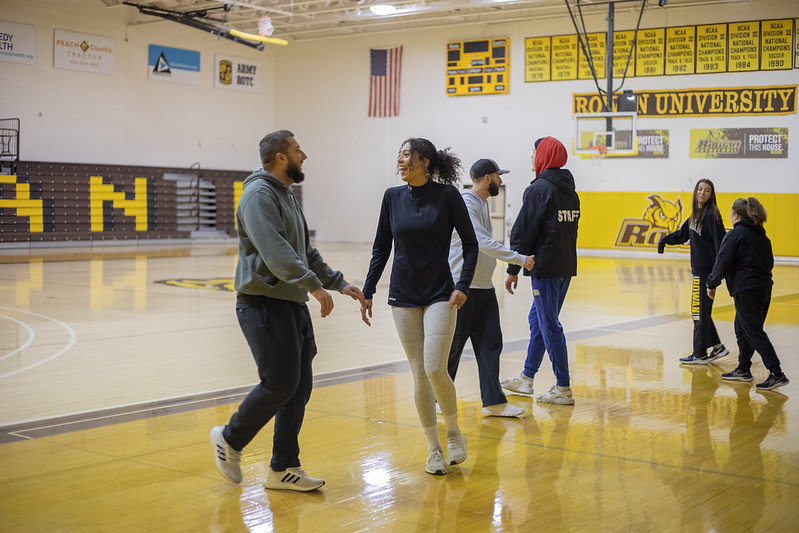
How has tearing your ACL affected your going into the health and physical education field?
I would say it has. Tearing my ACL was more so of a mental injury more than anything. I was kind of down for a bit. I wasn’t able to do the normal things that I’ve been doing since I was six years old when I had first started participating in sports. It was definitely hard on me. I feel like health and physical education was that kind of linkage and gave me solace as to where I am now. I know my own limitations now physically but I also am aware of the other side of things. I can always coach and help other young students and athletes play the sport that I love.
Where are you originally from and how has your transition been from there to Rowan?
I’m originally from North Jersey. I grew up in Bayonne. For myself, the camaraderie has been extremely beneficial for myself since I’ve been on campus. The best comparison that I could give for it is that it’s been almost like a natural instinct where I knew that Glassboro was going to be home for a few years. I feel like it was far away from home but not too far. I’ve still had my dad be able to come down and visit me down here. When I first arrived I do think there was a bit of a culture shock. I always knew North Jersey and South were super different but I remember just picking up on all of the different lingos when I first moved. The transition was still adaptable and now I can see myself staying down here for a few more years.
What do your future plans look like outside of college in the field of education?
For myself, there is still a bit of uncertainty. I don’t know if I’m going straight into a district and teaching after I graduate. But I do see myself coaching. I feel like I can bring about a very interesting perspective and would love to implement that into either coaching or physical education.
When I was growing up, my dad was a boxer and he actually won the Golden Glove a couple of times in New Jersey. My mom was a yoga instructor so I always felt as if it was natural for me to be as active as I am. What’s interesting to me nowadays is children who are struggling with mental health and how prevalent of an issue it’s becoming. You know, in this day and age there are so many different curveballs that are constantly being thrown at teachers such as social media, it makes it difficult to remain flexible.
During my clinical experience there was one particular teacher, Michelle Thornton, who had stood out to me. Thornton had the students work on their mindfulness and had a class dedicated to meditation in substitute for a physical activity in their PE class. I had sat in on one of those classes and I was blown away. In one of the times I was observing she told me this story of this room that was originally a storage room and how the school had renovated it just for her. This room was heavily decorated and seemed so warm and welcoming; there were multiple different tapestries arrayed on the walls alongside string lights and different yoga mats. Thornton’s teaching method was incredible to me, she would talk with the students for 40 minutes just reminding and reassuring them that they were okay and that the classroom was a safe space for them to get anything that they wanted off of their chest. I think in my field, I want to implement something similar, whether that be a yoga class instead of a volleyball lesson or a mindfulness class instead of something.
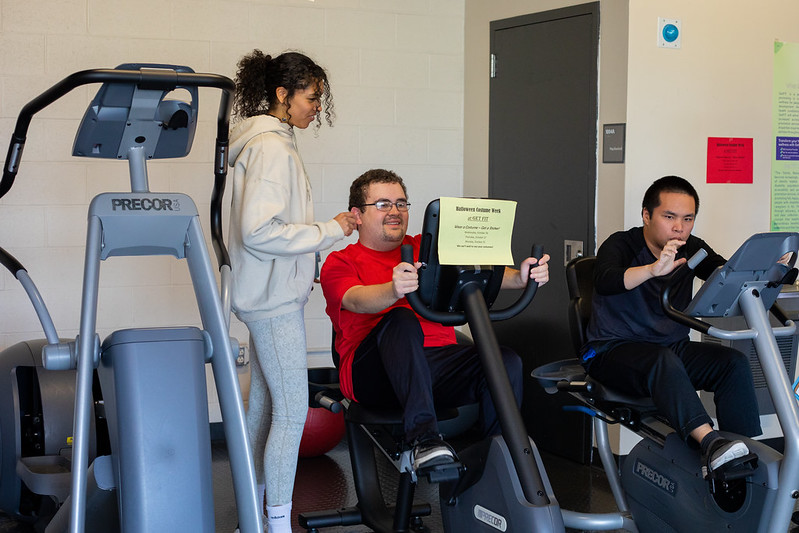
Can you discuss with us the importance of mental health in connection with physical health?
With physical activity, it boosts your endorphins and stimulations you; but, that’s not everything that occurs. Mental health is something that we forget to exercise and work on. As a society, I feel like we’ve grown as its become more of a goal that we want to reach to be happy by working on that part of ourselves. For myself, this is especially important for my own set of values. The professors here at Rowan do a great job at implementing health and wellness just as much as the physical education aspect.
With your ACL injury, you stated that it became more of a mind injury, how were you able to heal yourself mentally and continue to keep moving forward?
Going back to my personal injury, it was a big blow. Something that had helped me a lot was journaling how I felt every day and keeping track of the progress throughout the injury. It’s an extensive recovery lengthening around over nine months. Even after the recovery process you can still feel some aches and groans from the area. No matter how much I tried to focus on the physical aspect and get back to playing sports, I knew that I couldn’t rush the process. The mental block was especially draining. I had to face the fact that I might not be able to go back to playing sports.
Because of my experience, I want to remind students that if you ever go through such an endeavor, whether it be injury or anything else, I want to remind them that it’s good to have grit and have that drive to get back but to also be able to take a step back and let your thoughts settle about what had just happened. It’s important to recognize these type of thoughts, recognizing trauma is a huge task in itself, especially at a young age, students may not think of that possibility of not being able to play a sport again.
Of course, it may seem a bit outlandish to someone who has never played sports, but I can understand why someone may think it a bit extreme. However, to that person, whether that’s a student or athlete, these types of injuries are prone to causing trauma and be detrimental to their life. Right now I’m learning more about these trauma-based injuries and as a teacher, we have to be aware of the signs of it. Noticing patterns of lack of effort, attendance, and depression, lets you as an educator put that hand out to help students going through bleak times.
What’s an interesting aspect about physical education that you didn’t know until you took a course on it?
I’ve talked about nutrition a lot so far but something that was really eye-opening to me was school lunches. I want to be that voice to persuade the school or district that I’ll be at and let them know how processed students’ lunches are.
I also remember in high school that the football team that we had was the only team that had taken weight training seriously. In connection with my own injury, I tore my ACL and the doctor’s and people involved all had thought that it was my hamstring that had torn because it was so weak. Naturally, women have weaker hamstrings than men. Women are more quad dominant while men are more hamstring dominant, which is why you may see more ACL injuries in women. When I tore my ACL they had wrapped it up and I was even able to go to a Halloween attraction that night. I had surmised that everything was fine but when I woke up the next morning, my knee was the size of my thigh. From that point I knew something awful had happened.
This was also a great learning point for myself. Throughout that process of physical therapy and the read to recovery, a lot of emphasis was placed on growing the muscles around the knee such as the hamstrings, quads and glutes. Growing up, I had no idea that was even a thing. I hadn’t got involved with weight training until I came to Rowan my first year where it was mandatory for the basketball team to have 5 a.m. lifts. I can reflect on that now and think of how bizarre it was to have something so important such as weight training and have it neglected. You have the usual sports that are heavily involved with weight lifting such as the wrestling and football team but it goes beyond that. Women should also be doing the same thing to ensure maintenance of the body as well as prevent injury.
See our video with Adrianna here:
Like what you see?
LEARN MORE
Story produced by:
Lucas Taylor, English education graduate student
